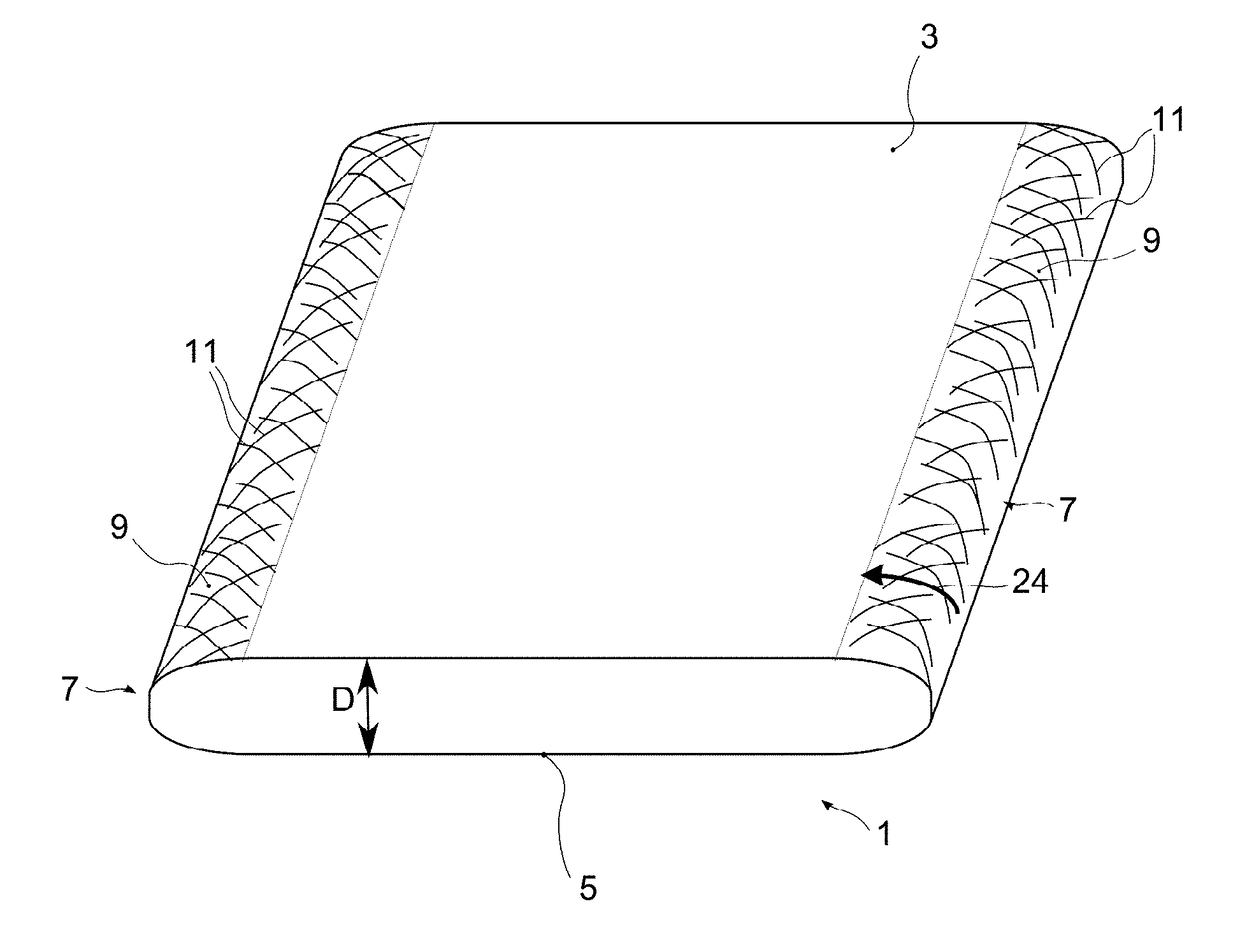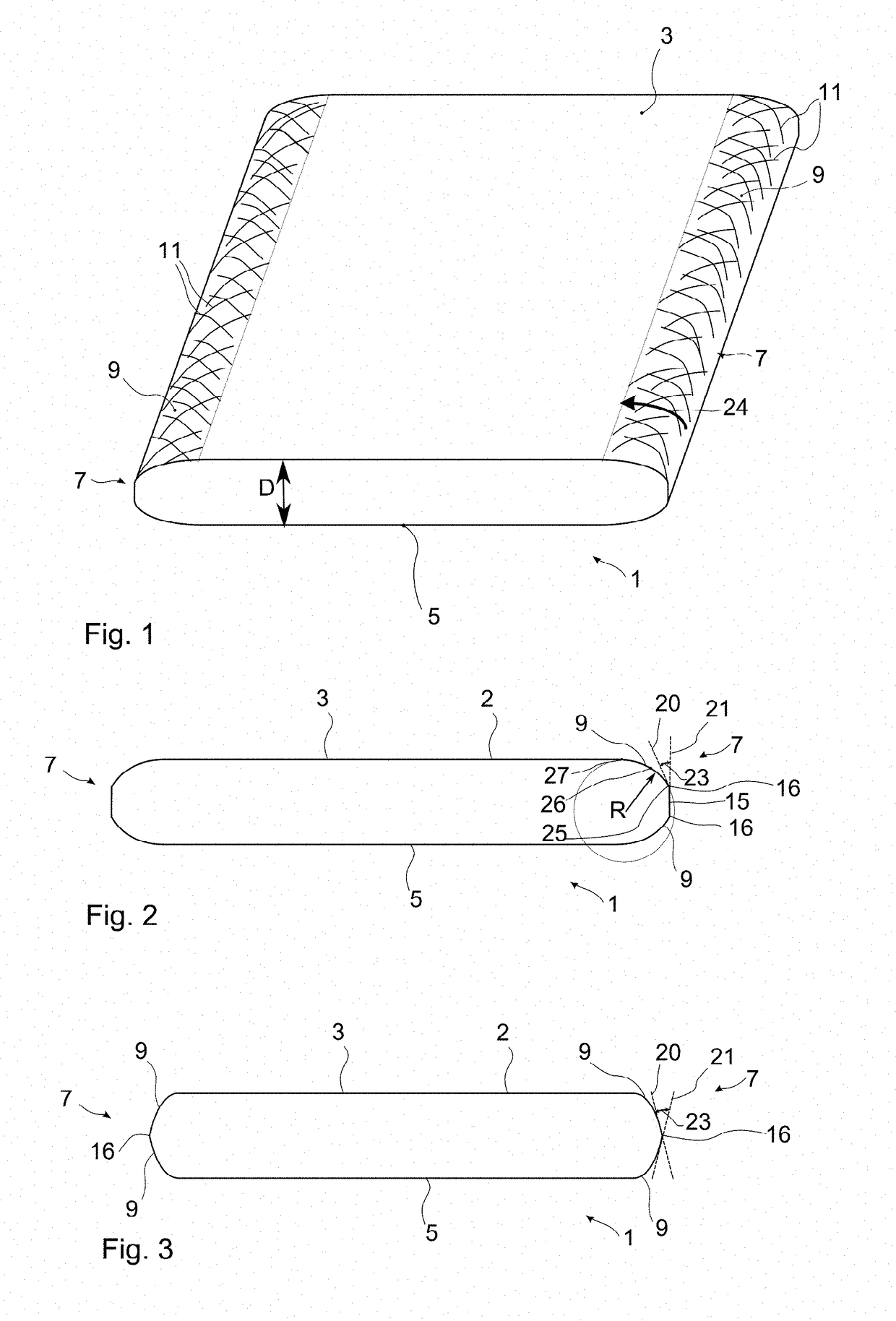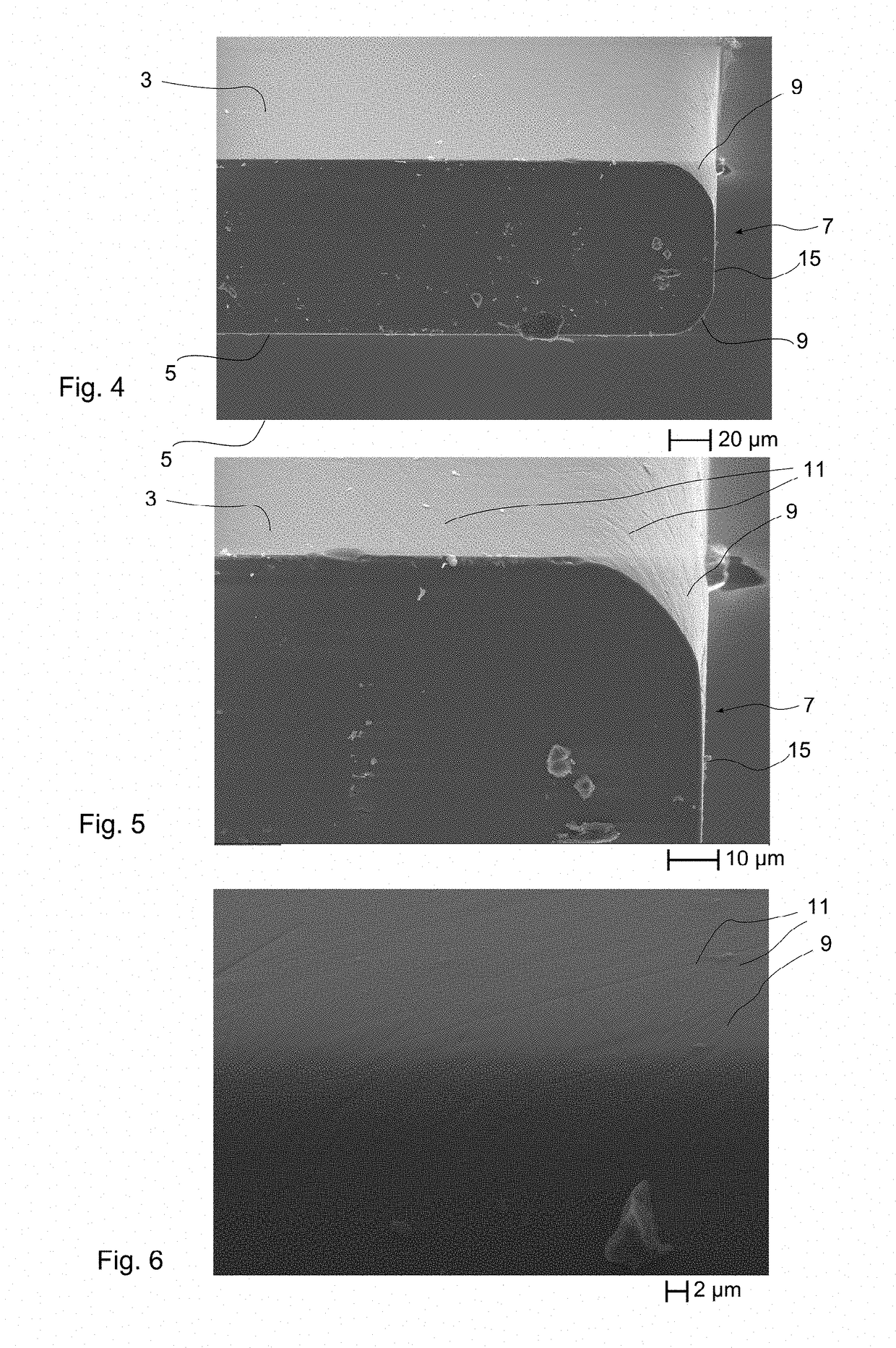Sheet glass product with increased edge strength and method for producing same
a technology of edge strength and sheet glass, which is applied in the field of sheetlike glass elements for the formation and processing of the edge of such glass elements, and can solve the problem of low stiffness
- Summary
- Abstract
- Description
- Claims
- Application Information
AI Technical Summary
Benefits of technology
Problems solved by technology
Method used
Image
Examples
Embodiment Construction
[0036]FIG. 1 is a perspective view of a sheet glass element 1 according to the invention. Sheet glass element 1 has two opposite faces 3, 5, in particular in parallel to each other. The thickness D of sheet glass element 1 is defined by the spacing between the two faces 3, 5 and is less than 700 micrometers, preferably 300 micrometers, more preferably at most 200 micrometers, most preferably not more than 150 micrometers. Even smaller thicknesses of not more than 100 micrometers, especially with a thickness of at most 70 μm, at most 50 μm, or even only at most 30 μm are also possible.
[0037]The portions of the peripheral edge 7 shown on the right and on the left in the view have been formed according to the invention. These portions include an edge surface portion 9 which is convexly curved. The length of the curved arc of edge surface portion 9 along the path from one face 3 to the other, opposite face 5 in the direction perpendicular to the longitudinal extension of edge 7 is at le...
PUM
| Property | Measurement | Unit |
|---|---|---|
| Length | aaaaa | aaaaa |
| Length | aaaaa | aaaaa |
| Thickness | aaaaa | aaaaa |
Abstract
Description
Claims
Application Information
 Login to View More
Login to View More - R&D
- Intellectual Property
- Life Sciences
- Materials
- Tech Scout
- Unparalleled Data Quality
- Higher Quality Content
- 60% Fewer Hallucinations
Browse by: Latest US Patents, China's latest patents, Technical Efficacy Thesaurus, Application Domain, Technology Topic, Popular Technical Reports.
© 2025 PatSnap. All rights reserved.Legal|Privacy policy|Modern Slavery Act Transparency Statement|Sitemap|About US| Contact US: help@patsnap.com



